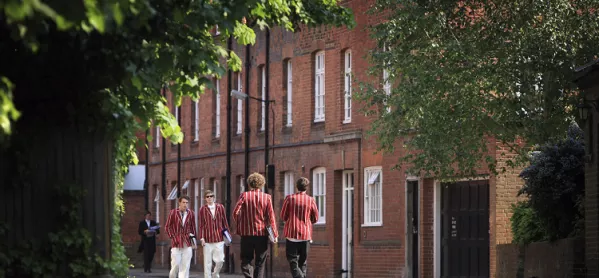British private schools are up to three times wealthier than their state counterparts, in what may be the biggest resources gap between school sectors in the world, a leading academic has said.
Francis Green, professor of work and education economics at UCL’s LLAKES Centre, said independent day schools today cost on average about £17,200 per year in fees.
UK private primaries charge, on average, £12,234 per pupil, compared with £4,800 of funding in state schools, according to data compiled by Professor Green.
In secondaries, that figure rises to £14,466 versus £6,200, and £15,333 versus £5,000 in sixth form.
As a result, Professor Green said the resources ratio between British private schools and state schools is about 3 to 1 - which he suspects is the largest in the world.
“Since 1980, there has been absolutely an enormous expansion of [private school] resources,” he told a conference, drawing on research for an upcoming book.
“Resources from fees have trebled since the 1980s in real terms, so these schools are three times as rich as they used to be in the 60s and 70s.
“It’s absolutely clear that the resources gap is huge - probably bigger than any other resource gap in any other part of the world, as far as I can tell.”
Charities and independent schools have been working to offer more subsidies for talented low-income students.
But Professor Green said that, as fees have risen, UK private schools have in fact become more out of reach for most people.
He cited figures showing that, in 1980, average private school fees were 20 per cent of median income, compared with 50 per cent now.
And he argued that despite a push to become more accessible, independent schools still spend only about 4 per cent of their turnover on bursaries.
“That 4 per cent figure has been the same for years and years,” he said.
“A lot of private schools have been genuinely trying to increase the amount of bursaries to make them more available to low-income families. Those attempts have pretty much failed.”
However, Julie Robinson, general secretary of the Independent Schools Council (ISC), added: “In citing the increased costs of education in the independent sector, Professor Green fails to acknowledge this figure has also risen in the state sector.
“ISC schools remain among the best in the world and a good level of resourcing is important in achieving this. Schools within our membership contribute considerably to the state sector and have stated their desire for a collaborative, diverse and well-funded education system which helps all children reach their potential.
“Although many ISC schools are run at cost and do not make a profit, a third of pupils receive help with their fees. £400million is given in means-tested bursaries. This number continues to rise, with more pupils receiving considerable amounts of discount.
“We recognise funding pressure on the state sector and it is important to note that independent schools educate over half-a-million children outside the state system, therefore relieving some of this pressure.”




